Alpha2Delta Audio PS1 phono-stage and PSU1 power supply is handmade in the UK and costs (as tested) £3999. Alan McIntosh takes a listen.
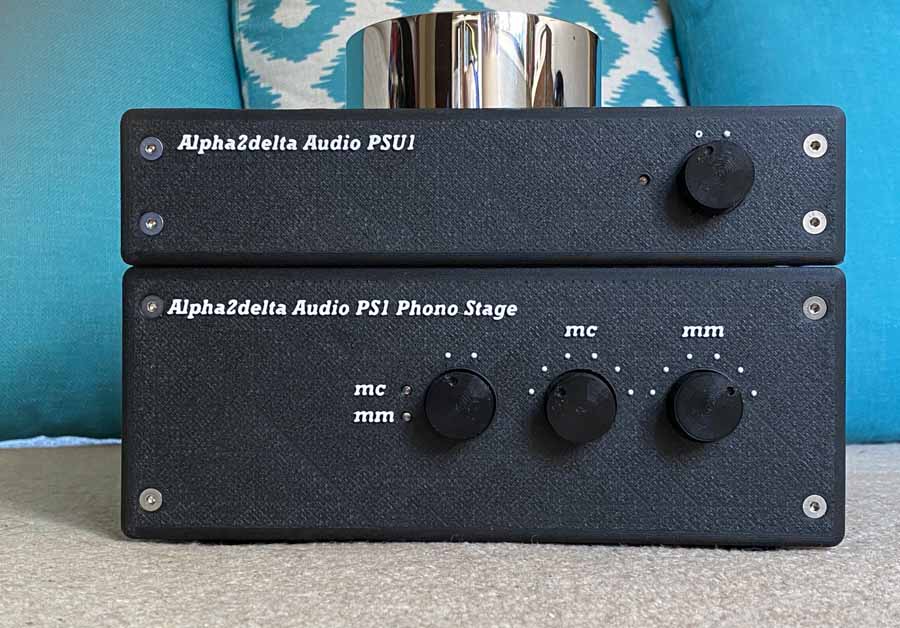
If like me, (when not listening to music) you enjoy passing these long lockdown nights with TV of a technical slant and seeing people solve problems while pitting their skills against one another, you probably end up watching TV and programs like Forged in Fire, Last Man Out, Masterchef or British Bake Off (the current Lockdown go-to for my wife and I) – if not bear with me! What becomes evident to me in each of these shows is that to get it right you need two things to work in perfect harmony – great skills (often born out of years of experience) and great ingredients. Have one but not the other and you get the dreaded soggy bottom! It’s the same in HiFi – you can have great engineering skills but poor components, or even great components but lack the skills to implement them well – but when you get both – well that’s when the magic happens. Enter the Alpha2Delta PS1 Phone stage and partnering PSU1 power supply.
Based in Hungerford (in the UK), A2D’s chief designer and founder, Jessica Kinchin, comes from a long career in design and advanced electronics, including formerly owning a company that provided ultra-sensitive test equipment for BT, the military and for medical research – not areas known for tolerance of anything but the very best equipment. With a childhood love of valves and analogue (Jessica built her first valve amp at 13!), A2D’s design ethic is about great materials, designing for the very best sound (but not budget) and aiming for ultra-low distortion and high-quality analogue reproduction – that shows in the choices made in the PS1. So, the relevant skills seem to be in evidence, but what of the “ingredients”? 
CONSTRUCTION
As a 2 box design, the PS1 and PSU1 are connected by a pair of satisfyingly well-constructed screw down umbilical power cables that are terminated in DIN plugs. The PS1 itself is a fairly plain black metal box with plastic front and rear plates (however, that front plate will be metal in the upper models). On the front, you have a rotary Moving Magnet (MM) /Moving Coil (MC) selector (two inputs can be connected at the same time) and two 6 point rotary selectors for each cartridge type to adjust capacitance (MM) and load (MC). It’s great to see capacitance adjustment for MM as it’s not so common these days. Round the back we find the power connections, silver-plated RCA inputs and output as well as a dip switch selector for balanced or unbalanced output (MC only). There is also a gain step-up selection for Low Output MC’s courtesy of the internal step up transformer. XLR connection is available as an option if desired.
The partnering PSU1 power supply immediately makes a visual impact with its large silver toroidal case sitting atop a square base box that is shiny enough to see yourself in! Power goes in via the usual IEC and 2 separate DIN umbilical lines pass power to PS1. The PSU also has a ground binding post employing a star point approach to eliminate ground loops.
The PS1 is a full valve, passive RIAA design employing specially selected 12Ax7 valves. These are renowned for high gain and ultra low distortion and hence a perfect choice for audio. A 6072A/12AU7 provides the amplification, with an ECC81 (12AT7) handling the load within a specifically chosen circuit architecture – all this adds up to a 32dB gain. That 6027A adding final amplification takes gain to a robust 42dB, with a rated capability to drive loads down to 10Kohms. The SUT offers additional gain for low output MC’s.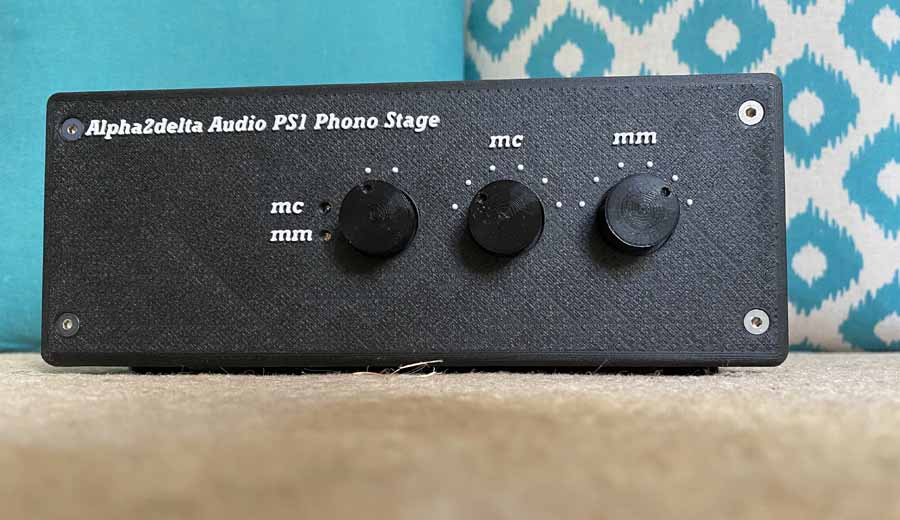
RIAA capacitors are courtesy of Charcroft (silver mica in this case) and the 6072A tube is a carefully selected balanced, gold-pin, ultra-low noise variant from TAD. The ECC81/12AT7’s are either military-grade NOS or NOS from GE in the USA, offering both high quality and coming fully balanced. A true dual-mono design, both channels in the PS1 are fully separated in a 6 layer PCB, with each channel completely isolated and getting its own HT power supply tracks and 0V planes.
The internal SUT is no afterthought either! Its unique design is said to offer a fixed 280V for the amp stage, but without feedback. It has a carefully selected smorgasbord of audio grade and military spec’ components from some of the best manufacturers in the business, including signal capacitors from Mundorf’s Silver and Gold range. 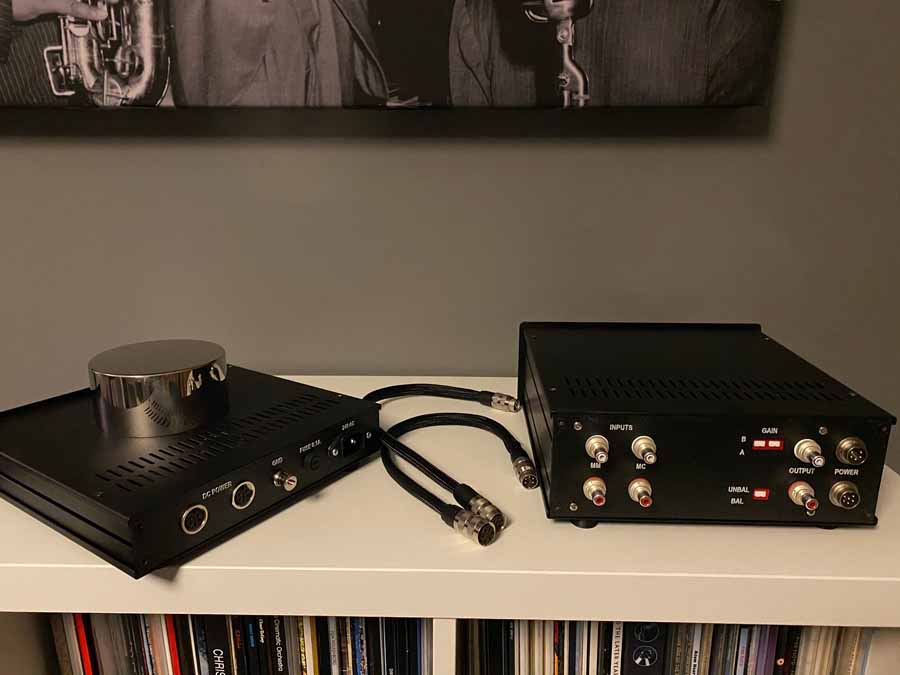
SOUND QUALITY
I have been listening to the PS1/PSU1 over the last 3 weeks or so as I’ve had some downtime and so I have been able to explore it without time pressure. This week I got down to some real critical listening!
With “Monks Dream” (Columbia / Impex 2016), Thelonious’ free form and at times seemingly off-kilter keying is so resolved and present you can almost see the Ivory beneath his hands. Dunlop’s drums snap and thwack with pace letting John Ore somehow keep us all sympatico on his bass. Rims and cymbals (often where things can be disappointing) are crisp and tight. Originally recorded in 1963, the separation and attack is wonderful – decay on the recording rooms natural reverb only brings us closer to the source. The PS1 gets out the way to let us get at that tight bass with no sickly sweetness and leaning towards precision that in lesser offerings could drift into sterility. This allows Monk to cut loose. I’m taken aback at the clarity and attack – there is incredible speed that is all wrapped up in a wonderfully impressive wide and deep sound stage. The PS1 also displays an extremely low noise floor, providing that inky black backdrop we all seek.
A quick change over and we have Herbie Hancock giving us “Direct Step” (Mastersound DirektDisk /Columbia RSD 2020). Here the PS1 offers a wonderful deftness balanced with a real subtly of delivery on the bass drum – it’s full, but never bloaty heartbeat cutting through the creeping inertia of “Butterfly”. Timbre and transients are again handled eminently well due, it seems, to the very high (more than 1.5V) input headroom. Time and time again the sound stage caught me off guard and I found it just wonderful to engage with. Those rippling key strokes of Hancock dancing across that bed of funky delight were like a dancer light footing across a lake of honey. The balance between detail and fulness here is very impressive with Hancock’s groovy yet frenetic pace being delivered without restriction or impedance that allowed the music just to carry you – superbly done and I find myself with a renewed appreciation of Hancock’s work that is now presented in even more glory. The use of Polypropylene capacitors instead of electrolytes is evident in the clarity and transient delivery. There is nothing holding the music back or clouding the presentation – it’s all here. Frankly, it’s wonderful!
Throughout the weeks of listening, I flipped between my Townshend Avalon turntable equipped with a fully restored Helius Designs Scorpio arm festooned with a bespoke wooden body modified AT95VM Shibata (courtesy of the increasingly well known Townshend/Rock guru Matt McNulty) and my heavily modified SL1210Mk3D running an upgraded Sumiko Blue Point Special Evo III on a lovely Origin Live Zephyr arm. Both the prior MM and latter MC performed well. The Sumiko I feel, being more forward, matched very well with the energy of the PS1 despite being an elliptical stylus. Placing my reference Vincent Pho700 stage back into my system only brought a sense of grief at what I had lost – the PS1 clearly outperforming it!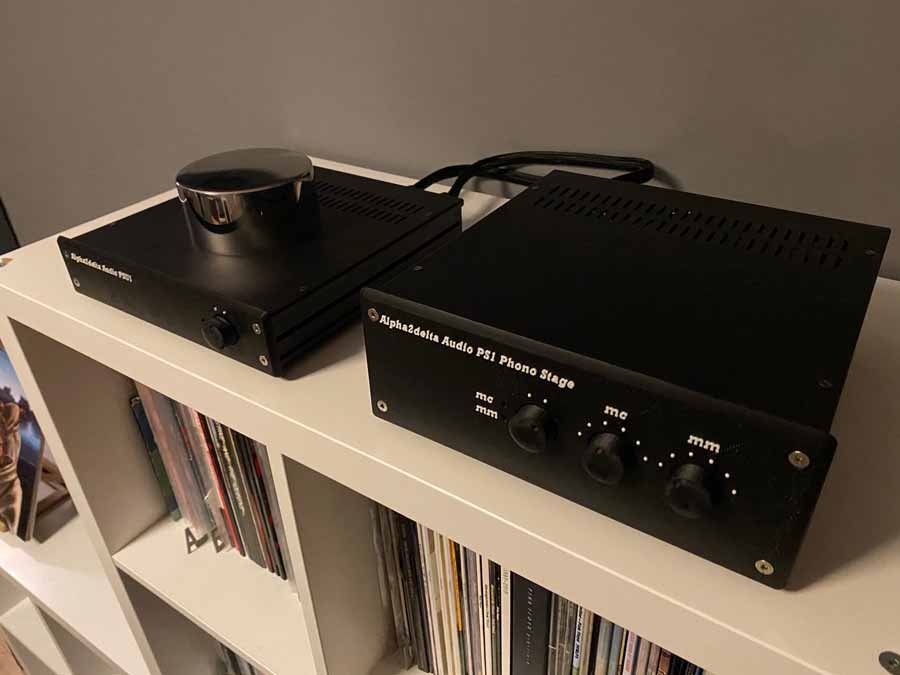
CONCLUSION
Alpha2Delta have taken the best ingredients and worked from a clean sheet to produce a superbly performing phono-stage. Aesthetically its both simple and bold but I would like to have seen a full metal body as opposed plastic front/rear panelling, but A2D say this allows for custom requirements of the client. Customizable for needs and budget this offers fantastic performance at a fairly accessible price point. The internal material construction is of the highest order with a “sit up and pay attention” sonic delivery. With an expansive sound stage, great detail and resolution, speed and energy (but without fatiguing in the slightest), the PS1 draws you in and you find yourself wanting to stay for more. A hidden gem and “must audition” for me. The proof was indeed in the eating!
AT A GLANCE
Build Quality: Carefully curated components, high quality design and execution. All path wiring in silver. All valve. Customisation options on loading and outputs. Strong aesthetics on the PSU1. Would prefer to see front and back plates finished to same high level.
Sound Quality: In a word, wonderful. The detail, transparency, pace and resolution really left a mark that couldn’t be matched by my reference phono-stage. Sound stage is very wide and deep. Not over clinical, but just enough brightness to keep you highly engaged.
Value For Money: With options for MM starting at around £800 and the full customised MM/MC combination between £4K and £5k (depending on requirements) it’s not small beer, but it is accessible to many and if you are seeking the very best out of your vinyl source then it’s a very worthy investment and not one you’d need to make again any time soon (if ever).
Pros: All valve, build quality, components choice, sonic performance, wide range of load options, customization available.
Cons: If I was ultra-critical I’d like to see the fascia finish improved to match the rest of the build. One for those with deeper pockets.
Price:
1 box MM only PS1 available from £799.
Full MM/MC versions with the PSU1 are available around £4k to £5k depending on the bespoke design for the client.
As tested £3999

Alan McIntosh
Review Equipment: Modified Technics SL1210 (Timestep V PSU, Origin Live Zephyr Arm, Hexmat yellow Bird, Sumiko Blue Point Special Evo III, on Townshend Seismic sink) ), Townshend Avalon (Helius Designs Scorpio Mk 2 arm, Modified Wooden bodied AT95VMSH), Hegel 190, Amphion Argon 3s speakers, Vincent Pho700 Phono stage for reference. Solid Steel stands, WyWire Blue interconnects and Chord Shawline speaker cable. All power by Titan Audio. Room treated with GIK acoustic panels.






















































































































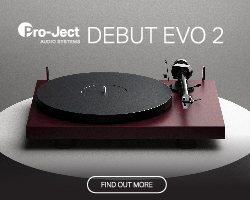
























































































You must be logged in to leave a reply.